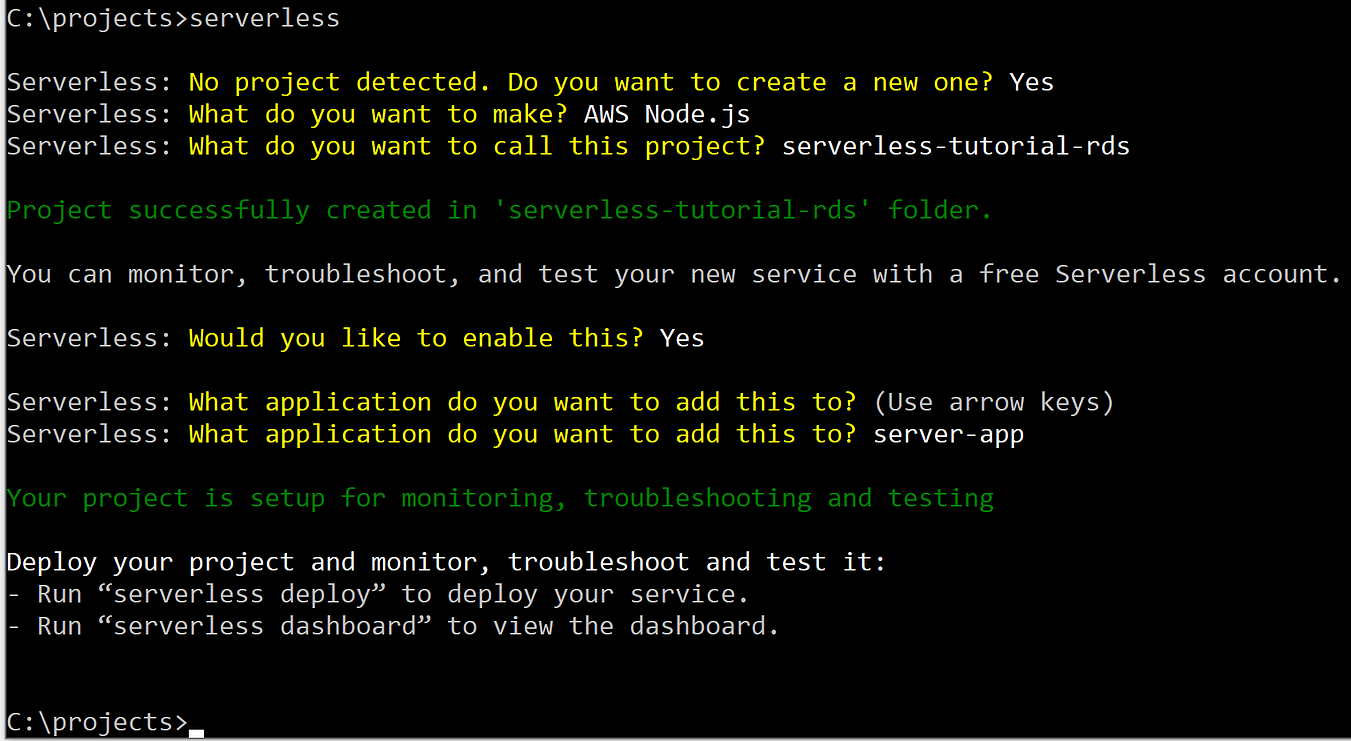

- NPM SERVERLESS TUTORIL HOW TO
- NPM SERVERLESS TUTORIL UPDATE
- NPM SERVERLESS TUTORIL CODE
- NPM SERVERLESS TUTORIL PROFESSIONAL
Get started with this quiz on serverless computing.
NPM SERVERLESS TUTORIL CODE
Learn more about OpenShift by using the open source code and instructions in the following content to build a secure cloud-based application: Serverless is an extremely attractive development approach, but developers need to know how and when it works.
NPM SERVERLESS TUTORIL HOW TO
You can now implement your own application that benefits from the use of a serverless architecture and build it using the serverless components that you just learned how to deploy.

You have an efficient way of running your applications and also have a way to run applications based on events. With the OpenShift Serverless Operator, you can have your own serverless architecture in your OpenShift platform.
NPM SERVERLESS TUTORIL UPDATE
One trigger is filtered to get events only when an update is occurred and one is filtered to get delete events. The triggers that are subscribed to the broker receive these events.The Event Source sends the event to the default broker.The changes in the database is received by the created Event Source connection.The following image shows the architecture of how all the components work together. A few files from the IBM/openshift-serverless-nodejs-couchdb GitHub repo.Note: This tutorial is not compatible with IBM Cloud Pak for Applications. If you use the latter, the Creating Red Hat OpenShift on IBM Cloud clusters tutorial might come in handy.

If you need to create one, you can use the IBM Cloud web console or the ibmcloud CLI. A Red Hat OpenShift on IBM Cloud cluster already provisioned so you can set up a pipeline.To complete this tutorial, you need the following environment: The examples in this tutorial use Red Hat® OpenShift® on IBM Cloud™. The example in this tutorial uses a CouchDB database to demonstrate the scaling up of applications from zero when changes are made to the database. It also walks through the process of deploying the available serverless components and how to run serverless applications in your platform based on events. This tutorial demonstrates the process of installing OpenShift Serverless in your own OpenShift environment. OpenShift Serverless is based on the Knative project that allows the deployment of its serverless components on top of Kubernetes. You use the OperatorHub web console to deploy OpenShift Serverless in your own OpenShift environment. This tutorial focuses on one Operator that enables OpenShift to have serverless workloads: OpenShift Serverless. For example, you can easily add more functionality in your own platform by using Operators. Handler.Red Hat® OpenShift® provides a lot of functionality for developers that is ready for immediate use. Create a file called and copy the following code in it: const mocha = require('mocha') Now it’s time to add a test to that function. This will create a basic serverless project with a function that just says hello. So, open a terminal, create a new folder wherever you want, cd to it and type: serverless create -template aws-nodejs Let’s start by creating a VERY simple NodeJS serverless application. In my case, the name of the profile is vgaltes-serverless An AWS profile created in your computer.The serverless framework installed on your computer.Two accounts in AWS, one simulating the development and the other one simulating the production environment.The goal is to learn how we can create a CD pipeline to deploy a serverless application. The goal of this article is not to show you how to build or test a serverless application, so the sample application will be extremely easy and the tests might not make sense.
NPM SERVERLESS TUTORIL PROFESSIONAL
In this article I’ll show you how to create a simple continuous delivery pipeline that brings us closer to a professional application development. You must have a CI/CD pipeline set up, you probably have two accounts (one for production and another one for development), you need a repeatable and reliable way to create your infrastructure and so on. You can even write a function in the browser! But that’s not how you should work on a daily basis. We hope you enjoy it! If you have questions about the content, you can reach out to Vicenç García-Altés here. It originally appeared on his blog, and has been re-published here with his permission. This is a guest post written by Vicenç García-Altés.


 0 kommentar(er)
0 kommentar(er)
